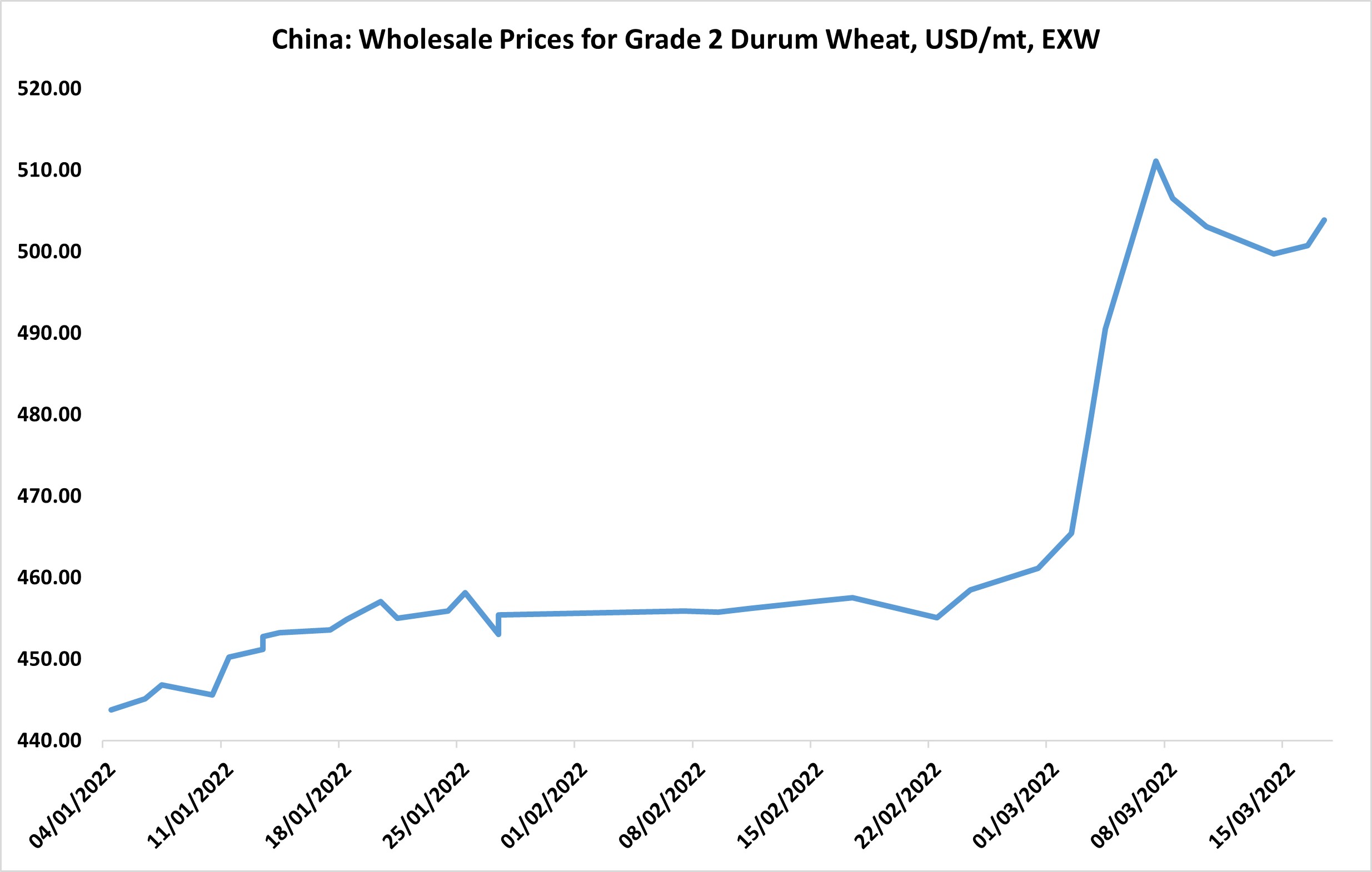Tightening global supplies and anticipated lower harvest trigger the rise in Chinese wheat prices

The upward price trend has dominated the Chinese domestic market since mid-2020 amid constantly increasing demand. However, the most substantial growth has occurred since a month ago. Wholesale prices for durum wheat surged to USD504/mt in W3 March 2022, up 14% from W1 January 2022. It was also 29% more than on the same date last year.

Source: grainnet.cn
Such a jump in domestic prices reflects the influence of two bullish factors that have picked up their mightiness over the last month. The first shake came from the wheat supply disruption in the Black Sea region (Ukraine and Russia) due to military action. Both countries account for 29% of world wheat exports, so global supplies are tighter.
While the above-mentioned factor has been challenging international grain trade since the end of February, the estimates of the Chinese Agricultural Ministry about a deterioration of winter wheat planting conditions in early March additional supported a price rise in the local market. Continuous rainfalls in October 2021 delayed winter wheat sowing by two weeks in 30% of wheat acreages in the Chinese North Plains. Therefore, the central wheat-producing provinces reported weak seedings, which may decrease the planted area. To maintain the quality of the upcoming crop, the Chinese government has granted USD253 million at the beginning of March 2022.
China's price susceptibility is strongly related to its tight domestic wheat supplies. Any unexpected change in the harvest, causing a sudden shift in the market equilibrium, may lead to a substantial price fluctuation. A perpetual increase in domestic consumption of milling wheat outstrips the current massive domestic output. USDA evaluates Chinese wheat production at 136.94 million mt in 2021-22 mt, 2% more YoY.
Despite gradually rising harvests, the country has also boosted imports to meet domestic consumption needs over the previous two years. China bought 10.3 million mt of wheat in MY 2020-21, more than twice as much thank a year earlier. The current year's imports are pegged at 9.5 million mt. Should the 2022-23 crop be affected, China may have to boost cereal imports.




